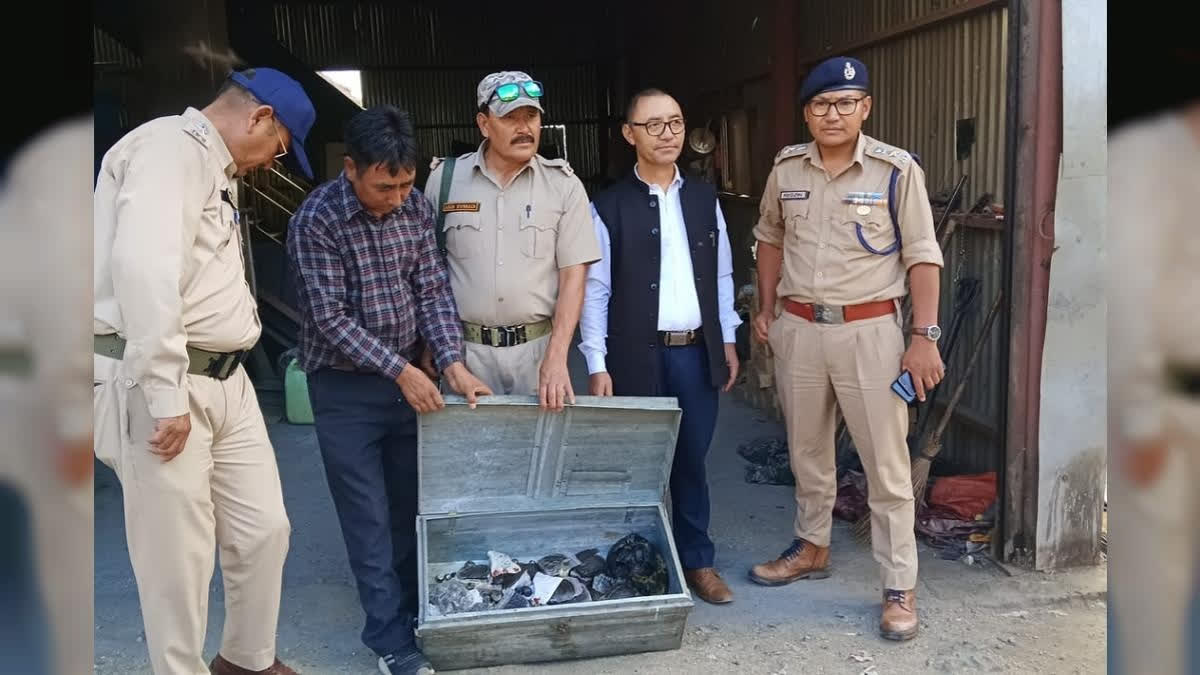By ETV Bharat's Rinchen Angmo Chumikchan
Leh: The data provided by the Anti-Narcotics Unit, District Police, Leh reveals a concerning trend in drug-related activities over the three years (2022, 2023, and 2024). A total of 36 cases were registered under the Narcotic Drugs and Psychotropic Substances (NDPS) Act, leading to the arrest of 53 individuals.
Narcotic substances seized in NDPS cases during 2022, 2023, and 2024 include charas (10 kg and 179 grams), Ganja (11 kgs, 731 grams), Brown Sugar (12 grams), Cocaine, (08 grams), MDMA (06.68 grams) and other drugs like Spasmo, Tramadol, Prxt 3185 capsules and 120 tablets.
As per data obtained from SNM Hospital Leh, between January 2024 and November 7, substance abuse cases reported include 27 cases of cannabis use, 8 cases of opioid use, 14 cases of polysubstance use, 6 cases of inhalant use, 54 cases of Nicotine Dependence Syndrome (NDS), and 464 cases of Alcohol Dependence Syndrome (ADS).
Inspector Jamyang Namgyal, Anti Narcotic Unit, District Police, Leh said, "The issue of drugs is very concerning in Ladakh. As winter vacation has already started and a lot of youth are free around this time, after tuition, they go to tea stalls where they meet a variety of people."
According to Namgyal, the youth become the target and the people whom they meet provide them with drugs and make them habitual.
He further states that once they become habitual they are told to buy the drugs from them.
"This led them to be involved in theft when their parents refuse to give them money. When a person becomes an addict, they become a drug peddler and further drug dealers. It becomes a vicious circle and it is difficult to come out of this,” added Namgyal.
Dr Padma Angmo, Psychiatrist at SNM Hospital, Leh, highlights a concerning trend in substance abuse. According to Dr Angmo, since 2018, there has been an exponential rise in the severity, variety of drugs, and the number of cases.
"Back in 2018, we would typically see 1-2 cases involving cannabis," she added.
"However, in recent months, we have encountered numerous cases of intravenous (IV) drug users. Upon inquiry, some patients revealed being part of large networks comprising 20-30 individuals, with daily expenditures on drugs reaching up to ₹7,000. Alarmingly, some also admitted to sharing needles. This is an extremely critical stage, as transitioning to IV drug use signifies an advanced and dangerous level of addiction. Currently, Ladakh is grappling with unemployment and a lack of opportunities for the youth, which are significant factors driving substance abuse. We must take immediate action to address this issue," added Dr Angmo.
According to Namgyal, the majority of the drug supply in Ladakh originates from outside the region, including Kashmir and Himachal Pradesh.
"This year, we registered 15 FIRs, primarily involving the seizure of charas and ganja," he added. The officer also stated that most of the charas was seized from outsiders, particularly Nepali nationals and individuals from Uttarakhand.
"Ganja was predominantly confiscated from Bihari labourers residing in the Skampari area of Leh. Instead of engaging in labour work, they resort to selling drugs to both Biharis and Ladakhis. During interrogations, they revealed that the drugs were sourced from Nepal and later distributed across the border. Their transportation route involves travelling by train to Delhi, then taking a bus to Himachal Pradesh, and finally using taxis to reach Leh, making it challenging to track their movements," added Namgyal.
According to Dr Angmo, the primary factor contributing to the rise in substance abuse is the increased availability of drugs and substances like MDMA and LSD, which were previously inaccessible in Ladakh due to their high cost, are now easily obtainable.
"This accessibility poses a significant threat, as these drugs are often unaffordable without substantial financial resources. Another contributing factor is exposure to misinformation. Additionally, the growth of adventure tourism in Ladakh plays a role. Studies have shown that individuals drawn to adventure are often high-risk takers and novelty seekers, making them more vulnerable to drug abuse," added Dr Angmo.
She also said that in many cases, substance use begins with self-medication.
"For instance, when someone is stressed, they might say smoking helps them feel relieved. Similarly, for anxiety disorders, taking medication can make them feel better, which often leads to dependency," Dr Angmo added.
"In severe mental illnesses like schizophrenia, heavy smoking is commonly used as a form of self-medication. Mental illness and substance abuse have a bidirectional relationship, where each exacerbates the other's risk and severity. However, there is a stark difference between the actual number of cases in society and those that seek medical intervention. While cases of intravenous (IV) drug users have been gradually increasing, not everyone is reaching out for the professional help they need. This is a critical gap that must be addressed," added Dr Angmo.
Namgyal believes that parental awareness is crucial in combating drug abuse.
"Many parents may not recognise certain drugs, which can appear as innocent items like stickers, toffees, or juniper. It is essential for parents to closely monitor their children, especially during the winter months, and keep an eye on their friend circles and social behaviour. There are specific signs and symptoms to watch for, such as facial blackening, sudden weight loss, marks on the body, aggressive behaviour, and social withdrawal. Identifying these indicators early can make a significant difference."
Dr Angmo added, "Most substance users are in their late teens or early adulthood. While female users rarely seek professional help, male users often disclose that females are also part of their social circles engaging in substance use."
Namgyal concluded by saying, "We conduct awareness programs and provide counselling not only for individuals but also for their parents. Under the NDPS Act of 1985, drug-related offences are dealt with very strictly, making it difficult to secure bail once caught. This strict enforcement is crucial, as drug abuse devastates families and society as a whole."
